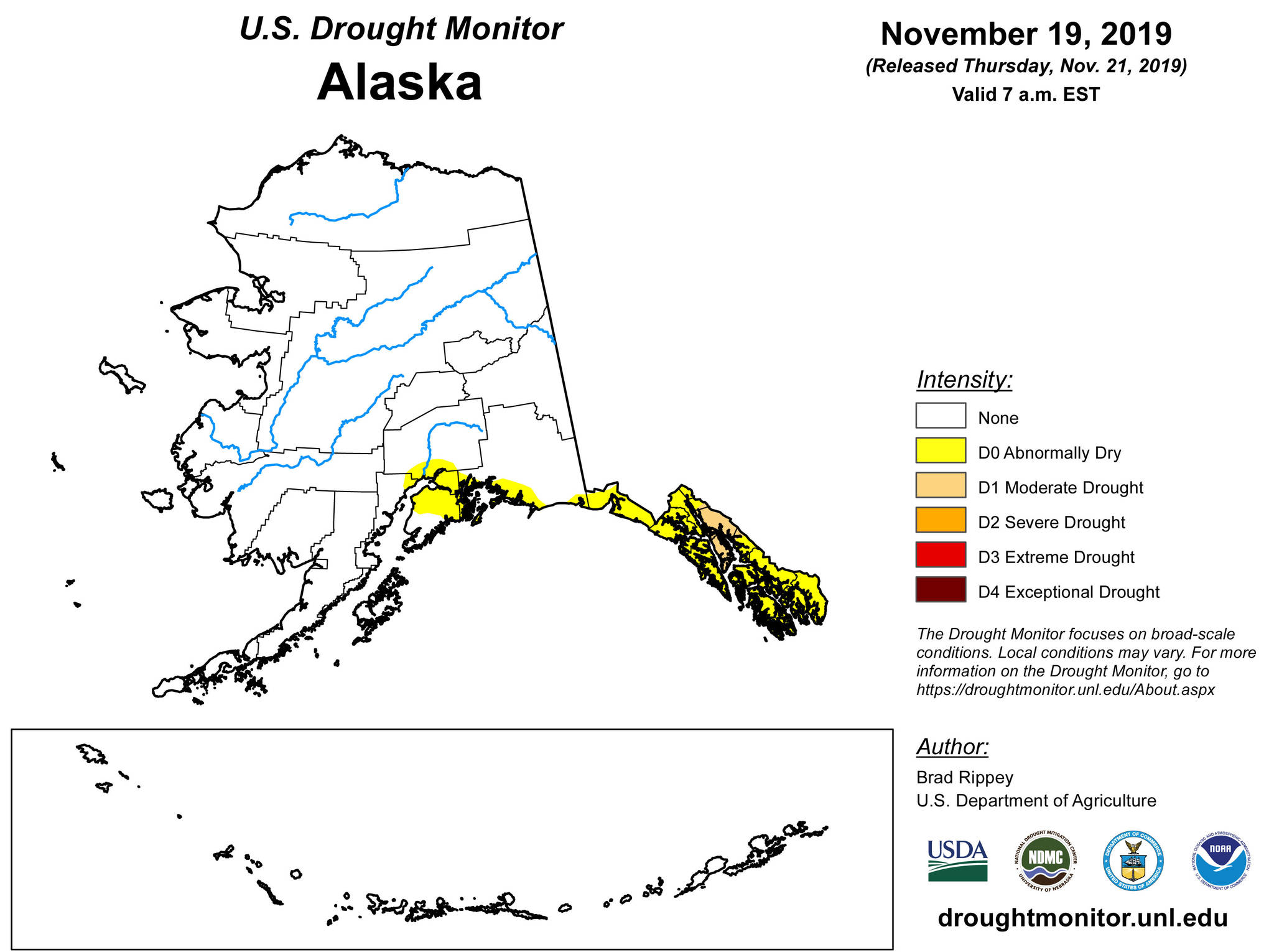The Kenai Peninsula is no longer in a drought, according to Thursday’s updated U.S. Drought Monitor Map.
Last week’s map showed the area around the Swan Lake Fire was in a level one drought, also known as a moderate drought. That drought was downgraded Thursday, showing the northern half of the Kenai Peninsula is “abnormally dry,” which indicates the area is recovering from drought and there are “some lingering water deficits.”
Southcentral Alaska saw “significant” snowfall last week, Thursday’s drought monitor’s summary said. Earlier precipitation, combined with the snowfall helped to downgrade the level one drought in the northwestern portion of the peninsula.
The Kenai Peninsula was first categorized by the U.S. Drought Monitor as abnormally dry on July 9. By July 16, the entire peninsula was placed in a level one drought. By the Aug. 13 monitor map, the eastern peninsula was placed into a level two drought, known as a severe drought. On Aug. 20, the area around the Swan Lake Fire, just north of Sterling, was placed into a level three drought, known as an extreme drought. The extreme drought wasn’t downgraded until Sept. 24.
The Kenai Peninsula experienced direct impacts from this summer’s drought when little rainfall and dry conditions allowed the Swan Lake Fire to swell up and burn more than 160,000 acres. Several peninsula communities relying on reservoirs and snowfall for drinking water saw their reserves dry up, prompting multiple emergency declarations.
The U.S. Drought Monitor provides a state-by-state list of potential impacts for each level of drought. All states and Puerto Rico are included, except for Alaska, where droughts are unprecedented.
The U.S. Drought Monitor — produced in partnership with the National Drought Mitigation Center at the University of Nebraska-Lincoln, the United States Department of Agriculture and the National Oceanic and Atmospheric Administration — measures droughts using five levels — level zero being abnormally dry conditions with no drought, and the fourth level being an exceptional drought. The U.S. Drought Monitor Map is updated every Thursday.

